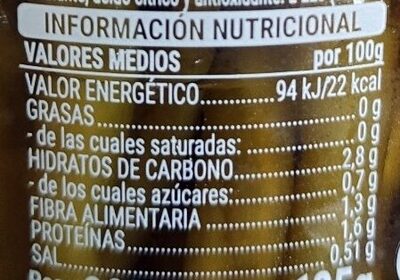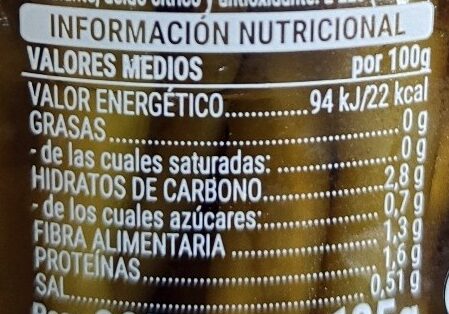Piparra - Hacendado - 285 g (125g escurridos) 16/09/22
This product page is not complete. You can help to complete it by editing it and adding more data from the photos we have, or by taking more photos using the app for Android or iPhone/iPad. Thank you!
×
Barcode: 8480000159670 (EAN / EAN-13)
Common name: Guindillas extra. Encurtidos vegetales ácidos
Quantity: 285 g (125g escurridos) 16/09/22
Packaging: es:Green dot
Brands: Hacendado
Categories: Plant-based foods and beverages, Plant-based foods, Fruits and vegetables based foods, Canned foods, Vegetables based foods, Canned plant-based foods, Pickles, Canned vegetables, Plant-based pickles, Pickled vegetables, Pickled peppers, Pickled guindilla peppers
Labels, certifications, awards:
Green Dot
Stores: Mercadona
Countries where sold: Spain
Matching with your preferences
Environment
Packaging
Transportation
Report a problem
Data sources
Product added on by kiliweb
Last edit of product page on by elfarto.
Product page also edited by alia, ecoscore-impact-estimator, elcoco, roboto-app, thaialagata, yuka.sY2b0xO6T85zoF3NwEKvlhxBavqErg_cCTLvnEem_-m1P6bLQuAs2o_5Has, yuka.sY2b0xO6T85zoF3NwEKvllB8YvfOnGrYZgzvt2aVz42NFKXTPMFf_berLqg.










